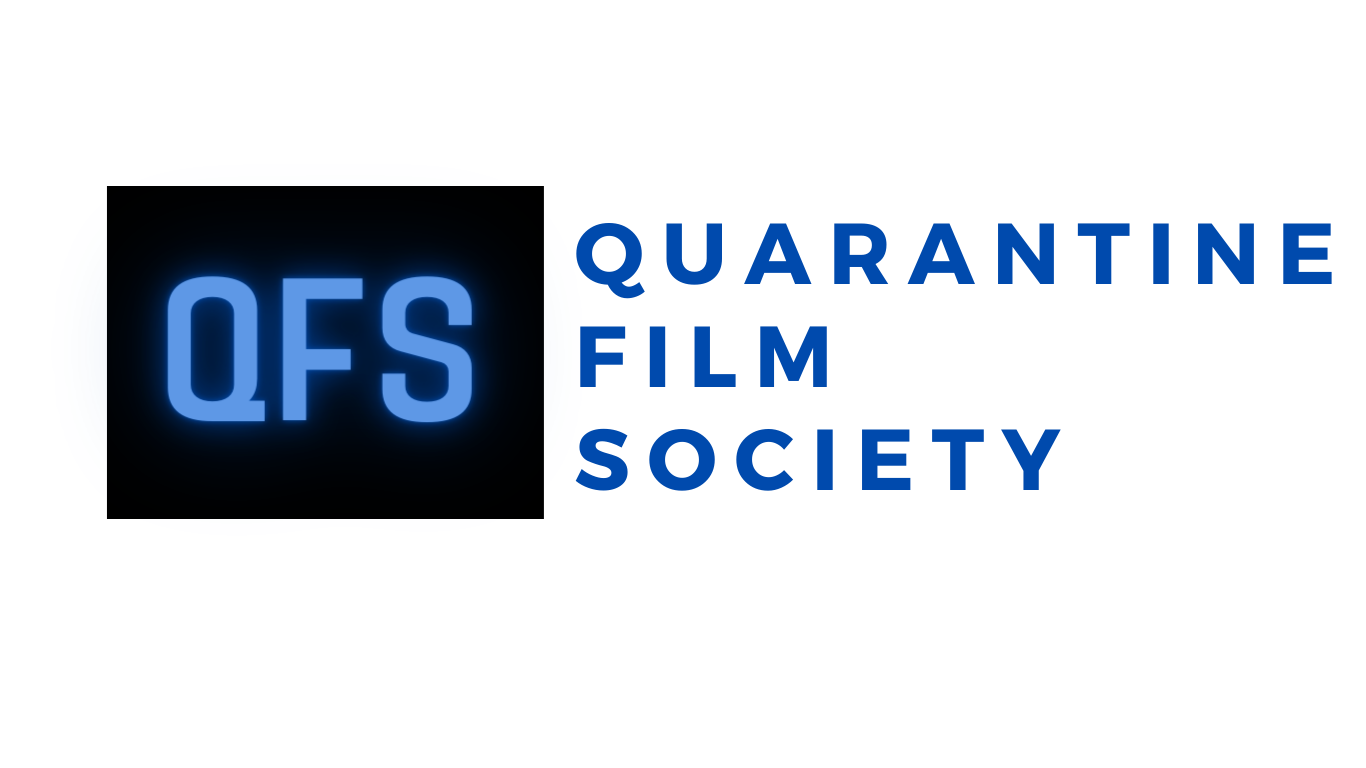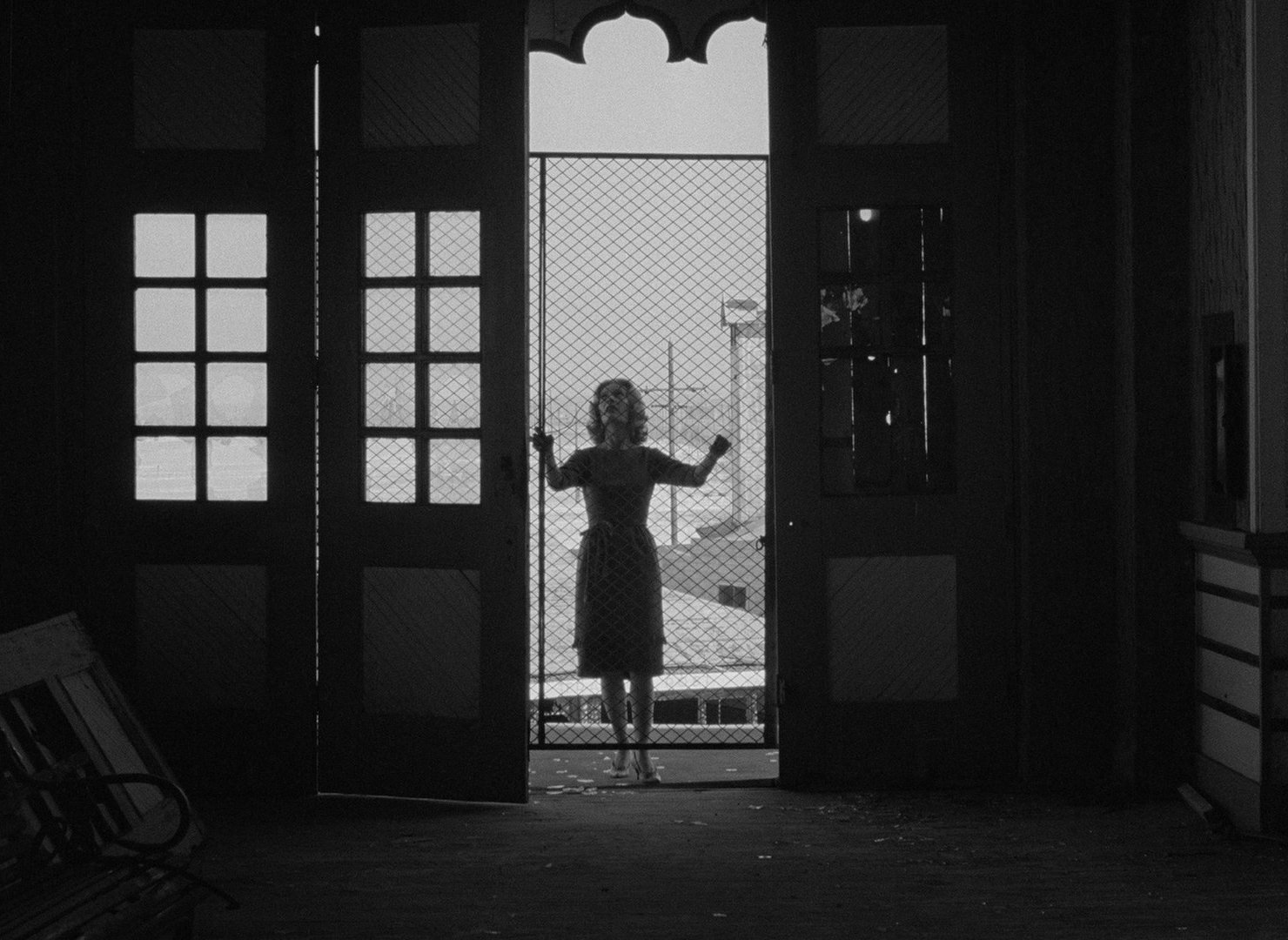Carnival of Souls (1962)
QFS No. 155 - The invitation for October 23, 2024
We go from low-budget drama for our previous selection to low-budget horror this week. This is going to be an incredibly short invitation, compared to the usual, because I deliberately know nothing about Carnival of Souls. I know that it’s a film that has been influential to filmmakers over the years, enough to be in the Criterion Collection, and that it from the 1960s. And maybe it has a carnival of sorts? Or perhaps its metaphoric!
Also, importantly – the film is originally in black and white. In my briefest of research, Amazon Prime is offering a color version. My suggestion is to eschew this colorized film and go for the original because we’re purists here at the Quarantine Film Society, as you know.
Okay, watch Carnival of Souls and join us to discuss this our 155th film!
Reactions and Analyses:
Although Carnival of Souls (1962) is not the origin point for person-is-dead-but-doesn’t-know-it-yet film, it certainly must be considered one of the first. An Occurrence at Owl Creek Bridge (1961), a short film from around the time Herk Harvey was conceiving of his story for Carnival of Souls is perhaps the first – that film is based on a 19th Century short story so it wasn’t a totally new concept. The “Twilight Zone” was incredibly popular on television in the early 1960s and featured a number of episodes where a main character is not alive who may not know it.
And now, in 2024, after we’ve had more than 60 years of films with this premise – most successfully executed in The Sixth Sense (1999) – is the surprise ending of Carnival of Souls really a surprise at all? Most everyone in our QFS discussion group had determined that Mary (Candace Hilligoss) is likely dead and doesn’t know it.
So given that, the ending doesn’t really pack a surprise. But perhaps that doesn’t matter all these years later. A film, made on a miniscule budget by a director who worked in industrial and educational films primarily and never made another theatrical feature again – how does a film like endure the test of time?
Herk Harvey, bound by the constraints of the budget and what available locations and resources he had, leaned into his limitations instead of trying to mask them. And beyond that, he uses a true artist’s eye for unnerving and enduring visuals. Take for example an early scene. Mary plays a massive pipe organ in an organ factory. Harvey shoots much of the scene from high above, the long verticals of the pipes reaching upwards like rigid fingers. It evokes a queasiness too, the verticals accentuating the height and creating a sense of unbalance.
On the one hand, this is a great premise – an organ player being hired to work in a church who doesn’t feel particularly religious and treats it as a job. On the other hand, we know now that Harvey had access to this particular location in his hometown of Lawrence, Kansas. He adapted his story to fit what he had.
One could say that about the actors as well. Candace as Mary is the only professional actor and the rest of the cast are “amateurs” which is a little generous. Many of them were Harvey’s co-workers, and their performances feel out of the ordinary. Something’s amiss with Mrs. Thomas (Frances Feist) the landlord of the home where Mary rented a room. John Linden (Sidney Berger) is extremely, perhaps extraordinarily, aggressive, ready and willing to sexually abuse Mary at the first chance. Dr. Samuels (Stan Levitt) is quite an aggressive doctor. No one acts in a manner that seems quite human.
Now, on the one hand, this could be just the pitfalls of working with a cast of primarily amateurs. On the other hand, if you write and create a film to use your production’s weakness as an asset, you’re able to use the fact that no one acts quite human to help enhance the feel of the world you’re creating.
And that’s the overall feel of Carnival of Souls – something is off. Nothing quite fits and that’s likely the point. Mary is in purgatory. And in purgatory, you’re neither alive or dead. Nothing is quite there and nothing is quite gone. In this purgatory, as opposed to Dante’s Divine Comedy where he’s attempting to pass through Purgatory, in Carnival of Souls we meander about throughout it. There’s no driving narrative, no main story in which the protagonist struggles to succeed. Instead, Mary is just mostly wandering around, trying to figure out why things are so off, why she’s obsessed with this abandoned bathhouse on the shore of the Great Salt Lake.
This uncertain feeling and mood allows for genuinely creepy imagery. I confess, the first time Mary sees the ghoulish man (NAME???) out the window while driving, I jumped in my seat. Mary looks forward, her reflection in the passenger window with the world going by as the sun’s going down, but then when she looks back it’s not her reflection she sees but our first glimpse of the man who haunts her throughout the film. Then he appears at night in front of the car as she’s about to hit him. It’s so effective at creating a sense of unease, and the film peppers these moments throughout.
The man appears to be stalking her, but only she can see him. Then, she’s haunted by him so much that she is unable to sleep and has a nightmare with crash zooms and wailing organ music, images of the Saltair bathouse filling her minds. Later, when she’s playing the organ at her new church, she becomes possessed, playing decidedly un-spiritual music, seeing visions of the ghoulish man dancing with similar-looking people in fast motion, a danse macabre.
Later, she’s in the department store and suddenly no one can hear her or see her, as if she doesn’t exist. She’s driven out, crashing into the arms of a dubious medical professional who isn’t all that helpful. Mary, at wits end from seeing the ghoulish man stalking her, moves her furniture around to block her door, and the filmmakers shoot from outside her lit window – the only thing in the darkness, and her frantic movements inside with the organ music playing. All of these are low cost, high impact storytelling techniques that creates this unsettling feeling.
And Harvey accentuates this with clever filmmaking. His use of high angles makes Mary small and lost in her world, both in the street then later in the abandoned bathhouse. The abandoned bathhouse sequence itself, as many in our group pointed out, displays real cinematographic acumen, using the location and it’s emptiness in an effective way to enhance our sense of unease – especially later when Mary is there and sees all the ghouls with her, trying to pull her down into the afterlife. And they eventually do.
The film is, of course, flawed in many ways. The feeling we had as a group is that the rules of this world are not yet solidified in the way they do years later. For example, there are a number of scenes that Mary wouldn’t be privy to – when the doctor and the landlady talk about Mary’s decision to leave or even after Mary succumbs to the demons at Saltair. The sheriff traces her footsteps and says they know that her car is there and this is where she fell but then the trail disappears.
So… are these people real and Mary existed among them but is gone? Or was this entire extra, post-death life just in Mary’s head while she was drowning to death in the car? And what happened in the bathhouse retreat – were people horribly murdered? Why are they there? These are not major flaws but are story holes that get ironed out later on in films that feature the dead-but-doesn’t-know-it protagonist.
In the end, of course, Carnival of Souls succeeds despite much of its short comings. The fact that the filmmaker knew he had shortcomings all around him posed no obstacle. Instead, he embraced these limitations, wrote his story to fit what he had available to him, and used his meager resources to his advantage. Harvey created a film that should remain a model for scrappy, savvy independent filmmakers – and not just ones who work in stories of horror or fantastical realms. Embrace your limitations and find ways to make your disadvantages into advantages.












